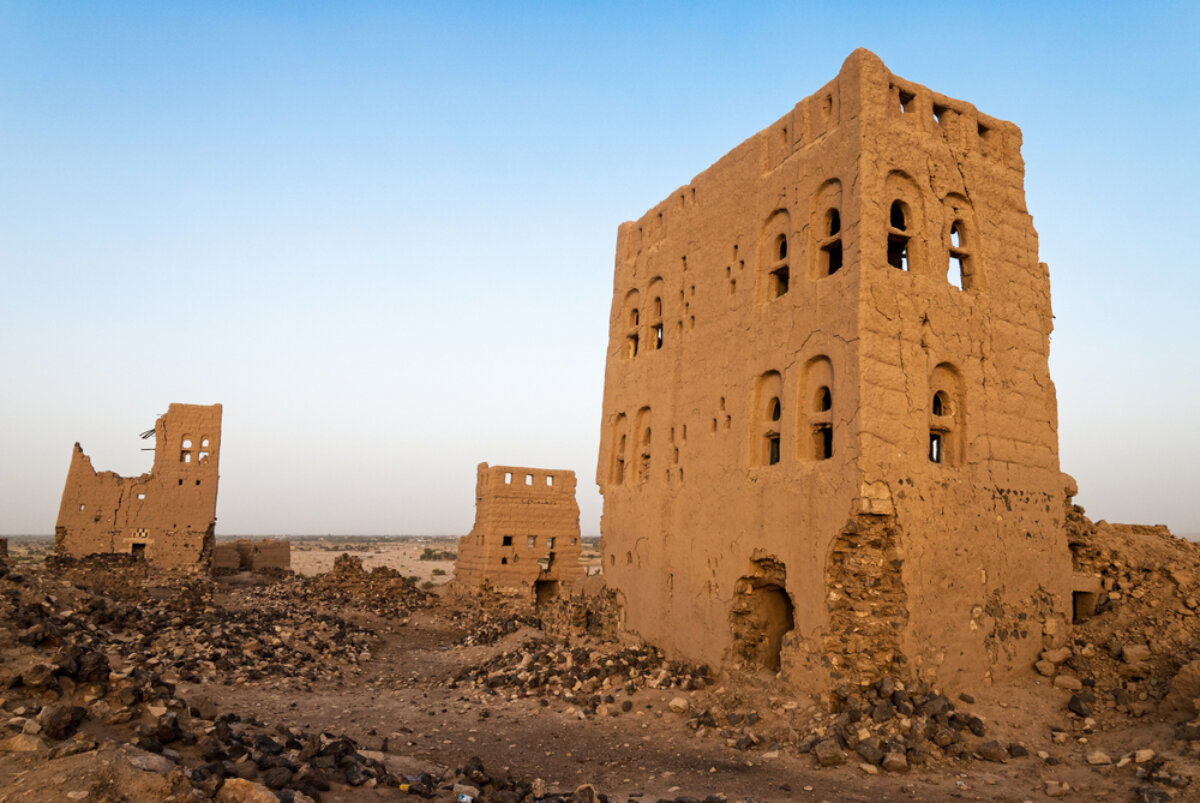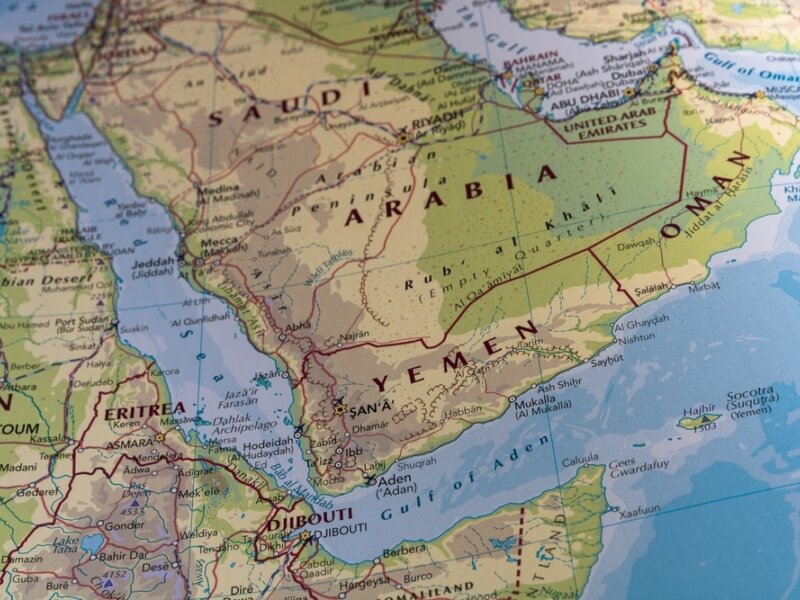Yemen and the Italian archaeological missions
The rediscovery and protection of Yemen’s archaeological heritage at the centre of cultural cooperation between Italy and Yemen. By Rossella Fabiani

“The Throne of the Queen of Sheba” was the last archeological exhibition on Yemen in Italy. Organised to highlight the historic ties between Italy and Yemen, it was hosted at the “Giuseppe Tucci” National Museum of Oriental Art in Rome between 2012 and 2013. The exhibition was dedicated to the memory of archeologist and orientalist Alessandro de Maigret, as a tribute to his work to set up the first Italian archaeological mission in Yemen in 1980. The mission is still active today, although, since 2014, it no longer has Italian personnel present in Yemen.
The aim of the mission was to trace the origins of the Sabeans and their predecessors, as well as to establish an exact chronology of the history of pre-Islamic Yemen. The discovery, in 1981, of Bronze Age vestiges in Yemen was the first evidence of a culture predating the Sabeans and made it possible to place Southern Arabia in the cultural context of the northern regions of the Fertile Crescent.
The excavations carried out inside the turreted city of Yala ad-Durayb (the ancient Hafari), discovered by de Maigret in 1985, made it possible to build a certain chronology for the oldest layers, dated between the 12th and 7th centuries BC. The systematic excavations that the Italian archaeological mission conducted in the Minean city of Baraqish (ancient Yathill) and in Timna, the capital of the Kingdom of Qataban, in the 1990s and 2000s, made it possible to highlight a cultural koine in the most ancient period of South Arabian civilisation. Since 2011, the situation in Yemen has precluded any field research. The last time the Italian mission was in the country, but confined in the capital city of Sanaa only, dates back to 2014. However, since 2012, cultural cooperation between Italy and Yemen has continued through training projects in archeology and restoration, carried out in Italy and addressed to the higher-level staff of the General Organization for Antiquities and Museums (GOAM), exhibitions and conferences, supported by the Ministry of Foreign Affairs and International Cooperation and by the scientific association Monumenta Orientalia. The main purpose of Italian-Yemeni cooperation today is to support the Ministry of Culture of Yemen in its difficult task of preserving the country’s cultural heritage.
The presence of Italian scientific missions in Yemen has contributed to important studies of the local flora, fauna and geology since the end of the 19th century. However, the first Italian mission in Yemen in the field of archaeology was created by Alessandro de Maigret, a professor at L’Orientale University of Naples, in 1980. In addition to reconstructing the country’s rich and complex prehistory, de Maigret’s mission is credited to have discovered the vestiges of the Yemeni Bronze Age, in 1981. When the Italian mission started its activities, the then Director of Antiquities, qadi Isma’il al-Aqwa’, an historian of medieval Yemen, offered to de Maigret to explore the area called Khawlan al-Tiyal, in the southeast of Sana’a. It was in this area that de Maigret discovered the first Bronze Age settlement ever found in Yemen, bringing to light more than 50 pre-Sabaean sites in the upland region, which had been until then unexplored.
Before de Maigret’s mission, Yemen‘s prehistory (Palaeolithic and Neolithic) and history (the Iron Age) were known, but there was a gap. The discovery of evidence of a period whose existence had been unknown was significantly important. Research on the Sabaean period, on the other hand, led to the discovery, in 1985, of a large ruin complex (Wad Yala) in the eastern desert margin which, after Marib, can be considered the most important Sabaean site discovered so far in Yemen. Since his inception as a President of “Arabia Antiqua”, International Association for Arabian Peninsula Studies, in 1991, de Maigret also conducted excavations in other countries, notably Saudi Arabia from 1993 to 1997. The start of a collaboration programme with the French archaeological mission headed by Christian Robin, led de Maigret to also direct an excavation campaign in the Sudarabic temple of Yeha, Ethiopia, in 1998, and to conduct six excavation campaigns in Timna, the ancient capital of the Sudarabic kingdom of Qataban, between 1999 and 2004
With Yemen, de Maigret forged “such relationships that have left a clear imprint on Yemeni culture, particularly in the archaeological and restoration sector”, as highlighted by the many Yemeni professionals trained under his programmes. In Sana’a, Shabwa and Marib, the Italian presence has allowed the enhancement of the Yemeni artistic heritage and it is “thanks to the work of Alessandro de Maigret and all the other Italian historians and archaeologists who have worked in Yemen for years that the Yemeni people are able to know and understand their own history”. This is how the Yemeni government expressed its gratitude for the work he did to enhance and protect the country’s cultural and archaeological heritage, as it conferred a medal in his memory to his widow, Sabina Antonini de Maigret, who has been the Director of the Italian archaeological mission in Yemen, since 2011.
The mission’s latest programme, carried out between 2020 and 2022, aimed to assess the condition of damaged monuments in Yemen, with a view to future restoration to promote the great wealth of the country’s cultural heritage, which represents the oldest civilisation in the Arabian Peninsula. It will take several years to document the conservation status of all monuments that have been affected by the ongoing conflict. However, as a first step, thanks to generous funding from the Aliph Foundation, an international alliance for the protection of heritage in conflict areas, an initial list of monuments has been drawn up for analysis. The assessment of the monuments’ conservation status will form the basis for planning the restoration of Yemen’s heritage. The project has enabled Yemeni experts to document the state of conservation of a number of historical monuments - some of which have been severely damaged - to provide an assessment tool that can be applied to all sites in the future, to prioritize interventions and plan efforts for their restoration and preservation.
“My intent is to carry out research with the same spirit with which the mission has always operated - says Professor Sabina Antonini – stimulating a relation of friendship and collaboration with the Yemeni side and the ability to be accepted by the community in which it operates, in full compliance with local rules. Yemen, like the entire Arabian Peninsula, is still a little-explored research field, where important discoveries are made every year, triggering lively international debates on the origins of the Sabaean civilisation and on the birth of Islam. Let’s not forget that the high level of development achieved in ancient times by the countries bordering the Mediterranean is also due to the relations they had with the Arabian Gulf, thanks to the intense trade both by sea and by land with the Incense Caravan, which was formed in Yemen and crossed the entire Peninsula, and remained in use until the advent of Islam”.



